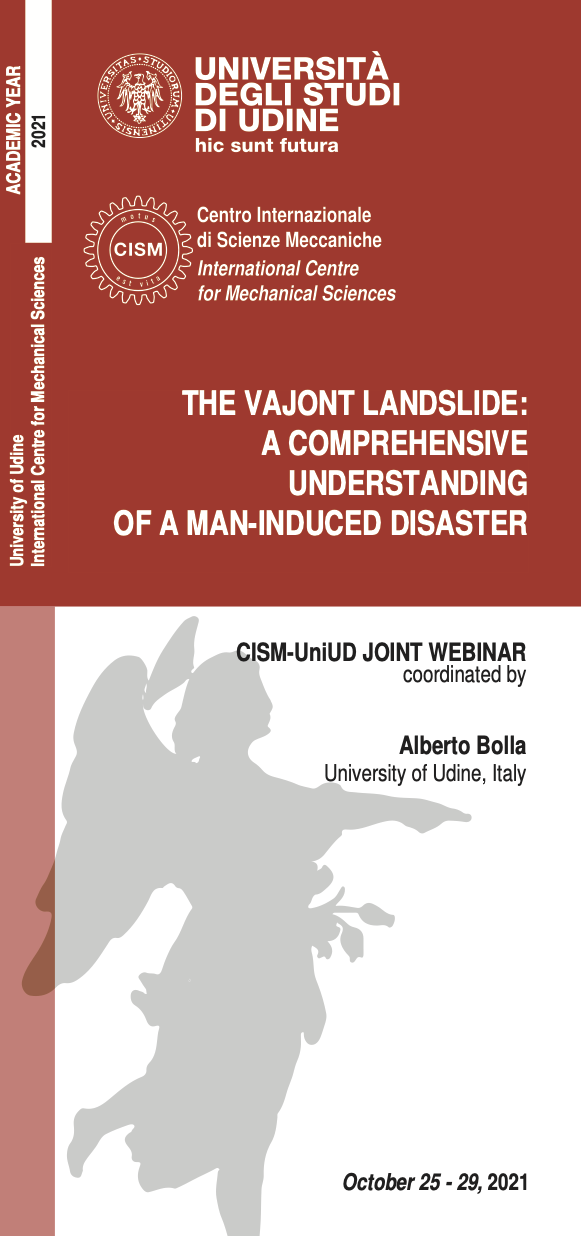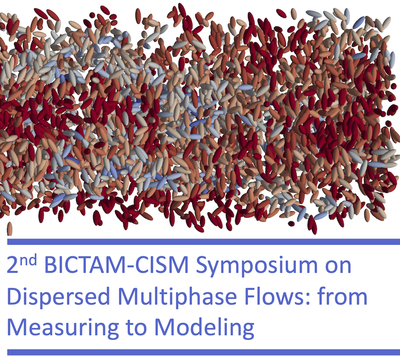On October 9th, 1963 at 10:39 p.m. (GMT + 1), a huge rock mass (about 270–300 million m3) detached from the northern slope of Mt. Toc (Vajont valley, North-East Italy) and slid into the adjacent Vajont reservoir provoking massive flooding that caused the complete destruction of several villages and towns and about 2,000 deaths. This tragic event is considered as the most disastrous landslide ever to occur in European territory, and was also cited by the United Nations Educational, Scientific and Cultural Organization (UNESCO) as the worst man-made environmental disaster of all time. For this reason, the 1963 Vajont landslide represents an important case history for scientists and researchers dealing with large rockslides and/or reservoir-induced slope failures. Owing to its scientific complexity, the Vajont rockslide event is often regarded as a milestone in rock slope stability studies, and it has also been considered as the starting point for the development of modern rock mechanics and rock engineering. A very extensive amount of research has been produced on the Vajont slide, starting from the years immediately after the disaster up to nowadays, focusing on different topics, including the causes of the slope rupture and the related failure mechanisms. Several engineering–geological aspects concerning the Vajont landslide have been strongly debated or differently interpreted by various authors. The proposed course will analysed topical geomechanical aspects of the Vajont slide on the basis of recently data acquired from the field and in the view of a innovative rock mechanics approach that implements further knowledge on the rock slopes progressive failure mechanism along with new insights into numerical modelling of rock slopes. The lectures would focus on historical, hydrogeological, geomechanical and dynamic aspects of the Vajont landslide.
The course is intended for students, doctoral and post- doctoral researchers in Civil, Geotechnical and Environmental Engineering, Engineering Geology, Applied Sciences and Earth and Planetary Sciences as well as for professional technicians, who are interested in deepening their knowledge on the various and relevant issues concerning the catastrophic Vajont landslide along with theoretical and practical aspects in the field of rock mechanics and rock slopes stability problems.
The main topics of the proposed course are:
- introduction to rock slopes stability problems with particular reference to the interaction between mountain artificial reservoirs and adjacent valley slopes;
- chronology of the significant events at Vajont that eventually culminate with the catastrophic Mt. Toc slope collapse (1960– 1963);
- synthesis of previous studies on the Vajont slide;
- presentation of newly acquired geological data from the detachment surface and the failed rock mass;
- evolution and brittle–ductile behaviour of the northern slope of Mt. Toc before failure (1960–1963);
- stability analysis of Mt. Toc slope during the filling–drawdown cycles of the Vajont reservoir (1960–1963);
- analysis of the failure mechanisms of the Vajont slide (thermo- hydro-mechanical processes and progressive strength decrease at the basal sliding surface);
- kinematics and run-out analysis of the Vajont slide;
- concluding remarks and recommendations for proper risk assessment related to the presence of artificial reservoirs in mountainous environments.
LECTURERS
Dr. Alberto BOLLA
Prof. Paolo PARONUZZI
University of Udine, Udine, Italy
17 lectures on:
1. Rock slope stability problems and mountain artificial reservoirs
2. October 9th, 1963: the occurrence of the Vajont landslide
3. Chronology of the significant events at Vajont: 1960–1963
4. Previous studies on the Vajont landslide
5. The newly acquired geological field data
5.1 The basal shear zone
5.2 The updated geological model of the Vajont landslide
6. Evolution of the northern slope of Mt. Toc
6.1 The multi-stage prehistoric slope failure
6.2 Brittle–ductile behaviour before the 1963 reactivation
7. Stability analysis of Mt. Toc during filling–drawdown cycles (1960–1963)
7.1 Combined seepage-stability analysis
7.2 Stress–strain stability analysis
Prof. Eduardo ALONSO
Dr. Núria Mercè PINYOL PUIGMARTI Universitat Politècnica de Catalunya, Barcelona, Spain
13 lectures on:
8. Lessons from a simple kinematic analysis. Two interacting blocks.
9. Internal shear and progressive failure. An MPM model of Vajont.
10. Thermal interactions in saturated porous media
11. Thermal pressurization of shear bands and run-out
11.1 Fundamentals
11.2 Results from simplified geometries. Planar and two interacting blocks.
12. MPM-THM approach to Vajont landslide
12.1 Dealing with shear bands
12.2 Results from the analysis
13. Concluding remarks and recommendations for mountain artificial reservoirs
PROGRAMME
Monday, October 25
8.45-9.00 | Web platform connection
9.00-10.00 | 1. Rock slope stability problems and mountain artificial reservoirs
10.00-11.00 | 2. October 9th, 1963: the occurrence of the Vajont landslide
11.00-13.00 | 3. Chronology of the significant events at Vajont: 1960–1963
Lunch
14.00-16.00 | 4. Previous studies on the Vajont landslide
Tuesday, October 26
8.45-9.00 | Web platform connection
9.00-11.00 | 5.1 The basal shear zone
11.00-12.00 | 5.2 The updated geological model of the Vajont landslide
12.00-13.00 | 6.1 The multi-stage prehistoric slope failure
Lunch
14.00-15.00 | 6.1 The multi-stage prehistoric slope failure
15.00-17.00 | 6.2 Brittle–ductile behaviour before the 1963 reactivation
Wednesday, October 27
8.45-9.00 | Web platform connection
9.00-11.00 | 7.1 Combined seepage-stability analysis
11.00-13.00 | 7.2 Stress–strain stability analysis
Lunch
14.00-16.00 | 8.Lessons from a simple kinematic analysis. Two interacting blocks
Thursday, October 28
8.45-9.00 | Web platform connection
9.00-12.00 | 9. Internal shear and progressive failure. An MPM model of Vajont
12.00-13.00 |10. Thermal interactions in saturated porous media
Lunch
14.00-15.00 | 11.1 Fundamentals of thermal pressurization of shear bands
15.00-17.00 | 11.2 Results from simplified geometries
Friday, October 29
8.45-9.00 | Web platform connection
9.00-11.00 | 12.1 Dealing with shear bands
11.00-12.00 | 12.2 Results from the analysis
12.00-13.00 | 13. Concluding remarks and recommendations for mountain artificial reservoirs
The registration fee is 150.00 Euro + VAT(where applicable)*
This fee includes downloadable lecture notes.
Applications should be made on-line through our web site:
www.cism.it/en/activities/courses/E2105
Deadline for registration is October 15, 2021.
A message of confirmation will be sent to accepted participants.
Applicants may cancel their registration and receive a full refund by notifying CISM Secretariat (email cism@cism.it) no later than one week before the beginning of the webinar.
Later cancellation requests and incorrect payments will be charged 50.00 Euro.
Applications should be made on-line through our web site: www.cism.it/en/activities/courses/E2105
Deadline for registration is October 15, 2021.
A message of confirmation will be sent to accepted participants.
Applicants may cancel their registration and receive a full refund by notifying CISM Secretariat (email cism@cism.it) no later than one week before the beginning of the webinar.
Later cancellation requests and incorrect payments will be charged 50.00 Euro.
A limited number of participants from universities and research centres who are not supported by their own institutions can request exemption from the registration fee.
Requests should be sent to CISM Secretariat by September 25, 2021 along with the applicant's curriculum and a letter of recommendation by the head of the department or a supervisor confirming that the institute cannot provide funding.
Preference will be given to applicants from countries that sponsor CISM.
* Italian VAT is 22%.

